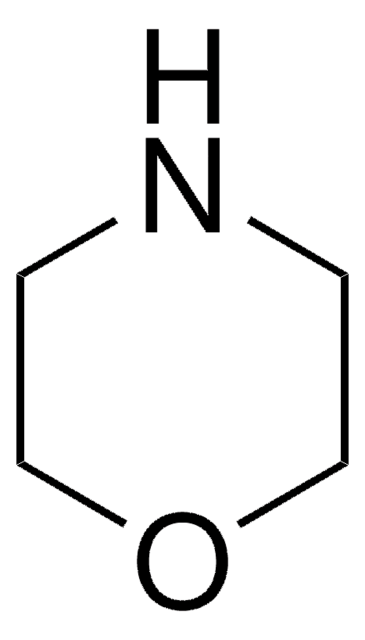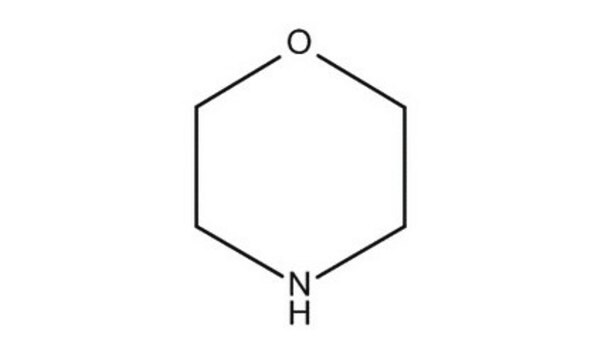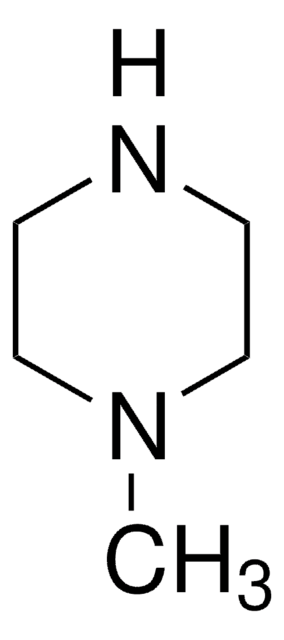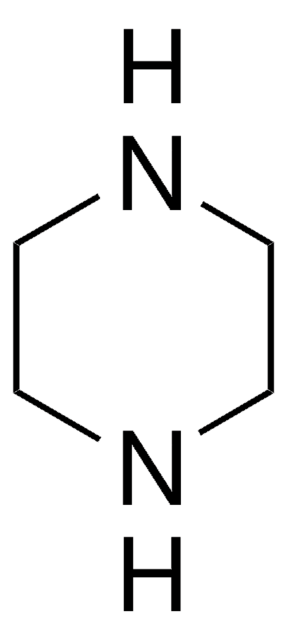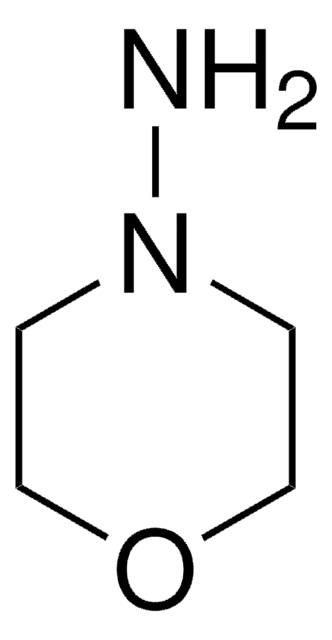Kluczowe dokumenty
134236
Morpholine
ReagentPlus®, ≥99%
Synonim(y):
Tetrahydro-1,4-oxazine
About This Item
Polecane produkty
gęstość pary
3 (vs air)
Poziom jakości
ciśnienie pary
31 mmHg ( 38 °C)
7 mmHg ( 20 °C)
linia produktu
ReagentPlus®
Próba
≥99%
Formularz
liquid
temp. samozapłonu
590 °F
granice wybuchowości
10.8 %
współczynnik refrakcji
n20/D 1.454 (lit.)
bp
129 °C (lit.)
mp
−7-−5 °C (lit.)
gęstość
0.996 g/mL at 25 °C (lit.)
grupa funkcyjna
ether
ciąg SMILES
C1COCCN1
InChI
1S/C4H9NO/c1-3-6-4-2-5-1/h5H,1-4H2
Klucz InChI
YNAVUWVOSKDBBP-UHFFFAOYSA-N
Szukasz podobnych produktów? Odwiedź Przewodnik dotyczący porównywania produktów
Opis ogólny
Morpholine is a cyclic amine that serves as a solvent, corrosion inhibitor, and chemical intermediate.
Zastosowanie
Informacje prawne
Hasło ostrzegawcze
Danger
Zwroty wskazujące rodzaj zagrożenia
Zwroty wskazujące środki ostrożności
Klasyfikacja zagrożeń
Acute Tox. 3 Dermal - Acute Tox. 3 Inhalation - Acute Tox. 4 Oral - Eye Dam. 1 - Flam. Liq. 3 - Repr. 2 - Skin Corr. 1B
Kod klasy składowania
3 - Flammable liquids
Klasa zagrożenia wodnego (WGK)
WGK 1
Temperatura zapłonu (°F)
87.8 °F - closed cup
Temperatura zapłonu (°C)
31 °C - closed cup
Środki ochrony indywidualnej
Faceshields, Gloves, Goggles, type ABEK (EN14387) respirator filter
Wybierz jedną z najnowszych wersji:
Masz już ten produkt?
Dokumenty związane z niedawno zakupionymi produktami zostały zamieszczone w Bibliotece dokumentów.
Klienci oglądali również te produkty
Nasz zespół naukowców ma doświadczenie we wszystkich obszarach badań, w tym w naukach przyrodniczych, materiałoznawstwie, syntezie chemicznej, chromatografii, analityce i wielu innych dziedzinach.
Skontaktuj się z zespołem ds. pomocy technicznej